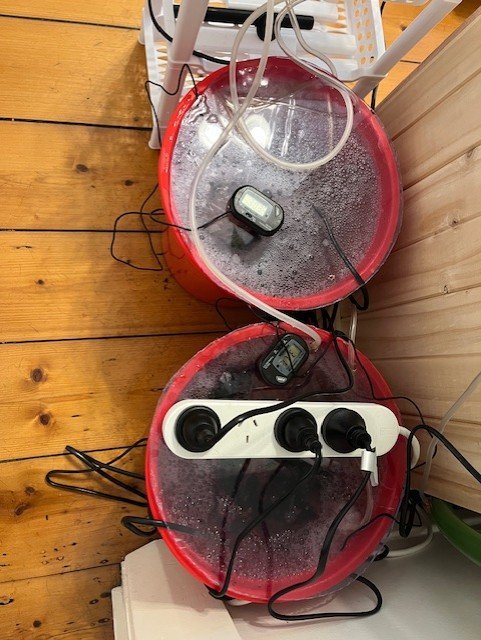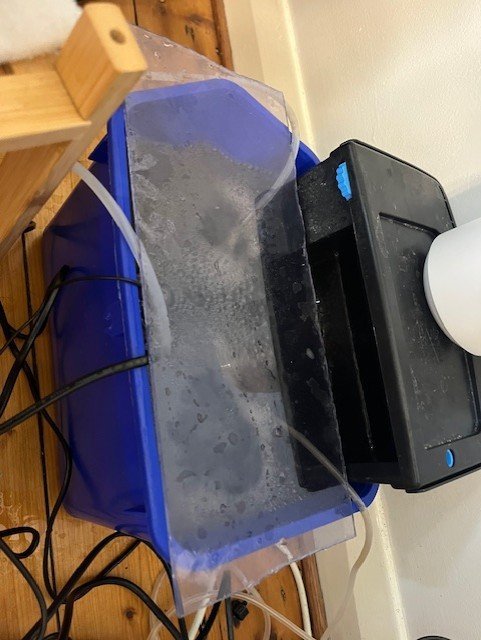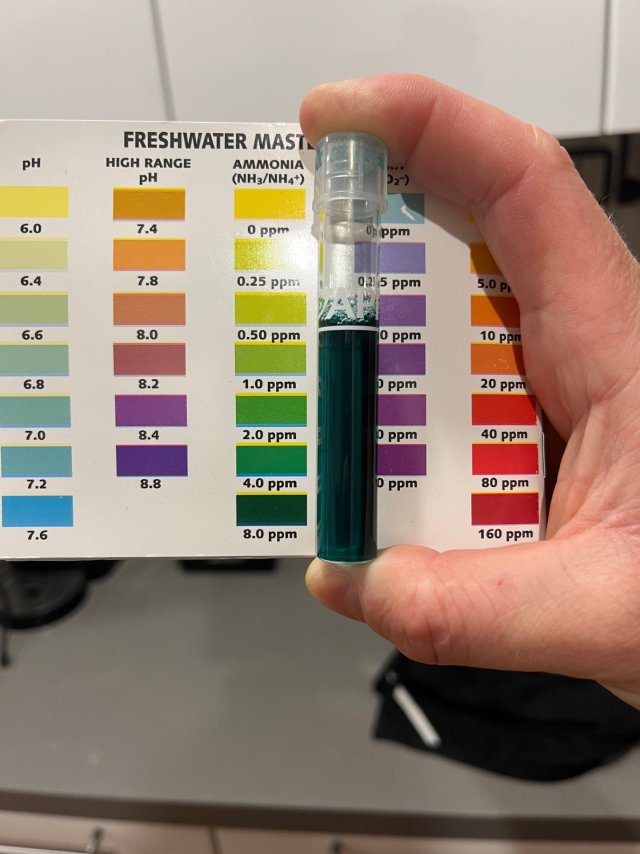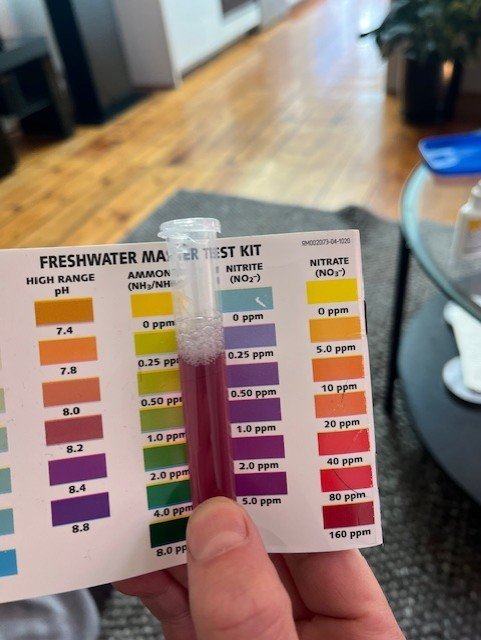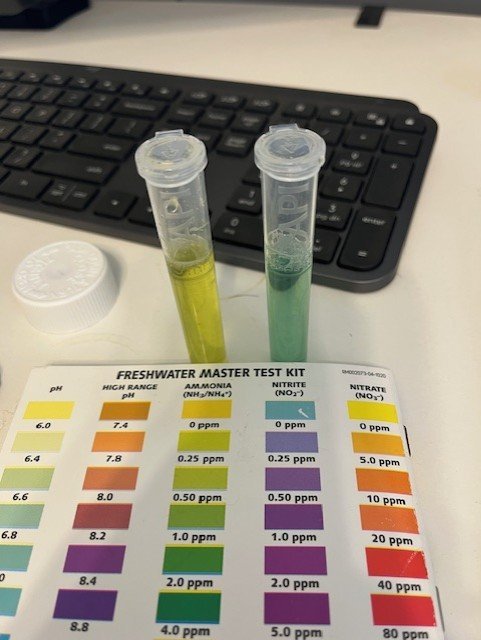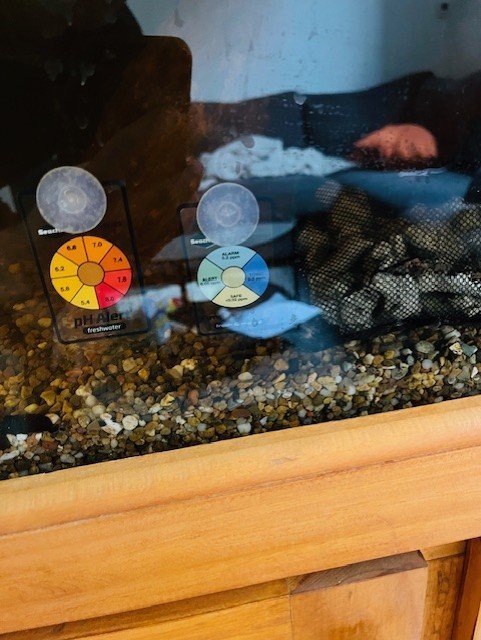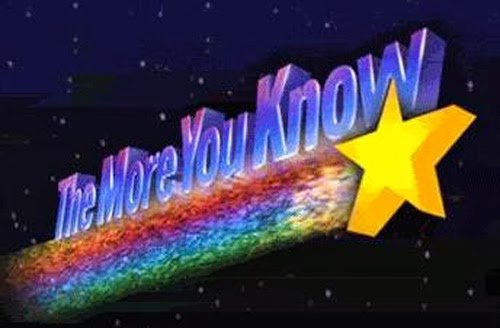Hey all.
Long time read of monsterfishkeeper, first time poster.
I know that people either love or hate aquariumscience, but I thought I would make an account to share my experience after having just completed 4 different cycling tests over the last fortnight.
For reference, I have a 65 Gallon tank with 2 comet goldfish that I have had for 8 years (filtered by 2x canisters). Given goldfish destroy all plants, and are a hassle in pairing with other tankmates, I recently bought a 40 Gallon which I am going to have some fun with - perhaps a community tank.
Anyways - approximately one month ago I stumbled across aquariumscience and was intrigued. I read all articles on the site, and all comments, etc. Given I was in no rush to cycle my new 40 Gallon, I thought I would put some of his methodologies to the test to fishless cycle the 40 Gallon, as well as 3 other buckets I had lying around.
Note that all the below tests used tap water & natural inoculate (i.e. I did not use any filter media from my old tank). All started with fresh tap water and dechlorinator & brand-new filters.
This is what I set up on the 6th February.
-------------------
1 x 40 Gallon Tank:
So now onto the 3 bucket tests I set up (see photo 1-3 attached).
For the 3 buckets, I followed aquariumscience's 'Rapid Cycling' methodology. Each bucket was filled with 2 gallons (9L) of tap water and dechlorinated. I then used the below new filters for each bucket:
Bucket 1:
For ammonia, I put 6 daily teaspoons of urine in the first 2 buckets, and 8 teaspoons of urine in the Tidal bucket. This results in approximately 6-8 PPM in first 2 and 8-10 PPM ammonia in the Tidal 75.
Each bucket had a heater set to 28-30 degrees Celsius and each also had a Seachem Ammonia Alert. As you can expect, all started Day 1 at a heavy toxic blue. Nitrite appeared in the API test in each bucket on days 3-5.
Results:
So in summary, over the last 2 weeks, I have cycled 4 different tanks (starting with dechlorinated tap water) with natural inoculate and a lot of urine), and all tanks are now processing 8-10PPM of ammonia daily. They process 2-4PPM of ammonia within 3-5 hours.
I am quite amazed at the speed and success of it. From reading - and from Aquariumscience own testing, it seems the phosphate in human urine is a powerful addition to the daily ammonia source for cycling a tank quickly. This is also confirmed by the blogs control testing which showed the fastest cycling tests (without natural inoculate) to be urine + phosphate.
I now have a LOT of spare cycled filters haha.
Anyways - I thought it was helpful to just share the results of the above tests, as I know I enjoy reading different methods people use!! All I can say is - try it yourself with a bucket of water, a sponge filter, some natural inoculate and your own urine, and see how you go! would love to hear your results.
Also - I have a spare brand new Tidal 110, that I am going to fill with pot scrubbers and run a similar test on starting tomorrow! Will update this thread with results from that as I go.
Would love to hear if anyone else has cycled to a high ammonia load quite rapidly and what were your methods?
Cheers
Long time read of monsterfishkeeper, first time poster.
I know that people either love or hate aquariumscience, but I thought I would make an account to share my experience after having just completed 4 different cycling tests over the last fortnight.
For reference, I have a 65 Gallon tank with 2 comet goldfish that I have had for 8 years (filtered by 2x canisters). Given goldfish destroy all plants, and are a hassle in pairing with other tankmates, I recently bought a 40 Gallon which I am going to have some fun with - perhaps a community tank.
Anyways - approximately one month ago I stumbled across aquariumscience and was intrigued. I read all articles on the site, and all comments, etc. Given I was in no rush to cycle my new 40 Gallon, I thought I would put some of his methodologies to the test to fishless cycle the 40 Gallon, as well as 3 other buckets I had lying around.
Note that all the below tests used tap water & natural inoculate (i.e. I did not use any filter media from my old tank). All started with fresh tap water and dechlorinator & brand-new filters.
This is what I set up on the 6th February.
-------------------
1 x 40 Gallon Tank:
- Substrate: Gravel (2-3 inch)
- Filters:
- 4ft undergravel filter with riser tubes connected to 2 Aquael Powerhead 500s
- 1 large sponge filter with riser tube connected to Aquael Powerhead 2000
- Inoculate: 1 large tablespoon of each of the below bacteria sources dropped into a sock that I ziptied and stuck with a suction cup infront of the Powerhead 2000 output.
- Pond Mud (from a local lake with koi)
- Pond Scum / Detritus (found a quiet area of the lake with a lot of detritus on top layer of pond mud)
- Organic composted cow manure (local hardware store)
- Organic potting soil (local hardware store)
- Dirt from my backyard flower bed
- Aeration:
- Jebao MCP Series Smart Crossflow Wavemaker (set it so there was a constant choppy wave)
- Set all powerheads to face to surface for turbulent movement
- Daily ammonia source:
- 10 teaspoons of urine
- 1/2 teaspoon of high protein koi food (65% protein)
- Other addition:
- 1 barley grain sized pinch of high phosphate fertilizer (added day 1 and not again)
- Baking soda added to tank whenever PH dropped below 7.6 (tried to keep it around 8-8.2 throughout)
- Heater:
- Set to 28-30 degrees Celsius throughout
- Testing:
- I have a Seachem Ammonia Alert on the tank which was a dark blue toxic colour from day 2. I also started testing with the API kit for Ammonia after day 3. All tests typically came back with the Ammonia off the charts (8-10PPM+; vial looked blue as opposed to max green indicating heavy ammonia)
- At day 5, I began testing nitrate as well and was pleased to see nitrate at a dark purple on the API test (5PPM+)
- Given the speed of which ammonia and nitrate were developing, I decided to increase daily urine to 15 teaspoons which I continued for remainder.
- At day 8 (14th February), I woke in middle night to go to the bathroom and noticed that the seachem ammonia alert had turned to green. I went back to bed and when I woke I saw that it was bright yellow. I then tested with API which came back with 0 ammonia and 0 nitrites.
- So for the last 4 days, I dosed 20 teaspoons of urine each night (equivalent to 8-10PPM ammonia) and tested a few hours later and sure enough, Seachem Ammonia Alert was blue and API test was dark green/blue. After 18 HOURS - Ammonia Alert was yellow again and my ammonia and nitrite was again 0. I repeated this for 4 days in a row, which brings me to today (18 Feb).
So now onto the 3 bucket tests I set up (see photo 1-3 attached).
Bucket 1:
- Filter: 2 small sponge filters ($10 each off Amazon)
- Filter: Homemade sponge filter (I took a spare riser tube that I had for the UGF above and drilled holes in the tube. I then took 20PPI foam and wrapped it around the riser tube and ziptied it in place. I then took an airstone and placed it within the riser).
- Filter: Seachem Tidal 75 (filled with pot scrubbers)
- Aeration: 2x airstones
- 1 tablespoon of each of the bacteria sources. For the first 2 buckets I just poured each spoon into the water of the buckets with the sponge filters
- For the Tidal, I put the bacteria into a sock and placed it in the filter media under the pot scrubbers
For ammonia, I put 6 daily teaspoons of urine in the first 2 buckets, and 8 teaspoons of urine in the Tidal bucket. This results in approximately 6-8 PPM in first 2 and 8-10 PPM ammonia in the Tidal 75.
Each bucket had a heater set to 28-30 degrees Celsius and each also had a Seachem Ammonia Alert. As you can expect, all started Day 1 at a heavy toxic blue. Nitrite appeared in the API test in each bucket on days 3-5.
Results:
- Tidal 75 bucket: Day 6 (ammonia alert was yellow 18 hours after addition of 10PPM of ammonia).
- There is also a strong layer of brown gunk in the tidal media that has built up in that time. The pot scrubbers have a nice biofilm on each.
- Homemade sponge filter bucket: Day 7 (ammonia alert turned yellow 18 hours after addition of 8PPM of ammonia).
- 2 small sponge filters: Day 9 (ammonia alert turned yellow 12 hours after addition of 8PPM of ammonia).
I am quite amazed at the speed and success of it. From reading - and from Aquariumscience own testing, it seems the phosphate in human urine is a powerful addition to the daily ammonia source for cycling a tank quickly. This is also confirmed by the blogs control testing which showed the fastest cycling tests (without natural inoculate) to be urine + phosphate.
I now have a LOT of spare cycled filters haha.
Anyways - I thought it was helpful to just share the results of the above tests, as I know I enjoy reading different methods people use!! All I can say is - try it yourself with a bucket of water, a sponge filter, some natural inoculate and your own urine, and see how you go! would love to hear your results.
Also - I have a spare brand new Tidal 110, that I am going to fill with pot scrubbers and run a similar test on starting tomorrow! Will update this thread with results from that as I go.
Would love to hear if anyone else has cycled to a high ammonia load quite rapidly and what were your methods?
Cheers


